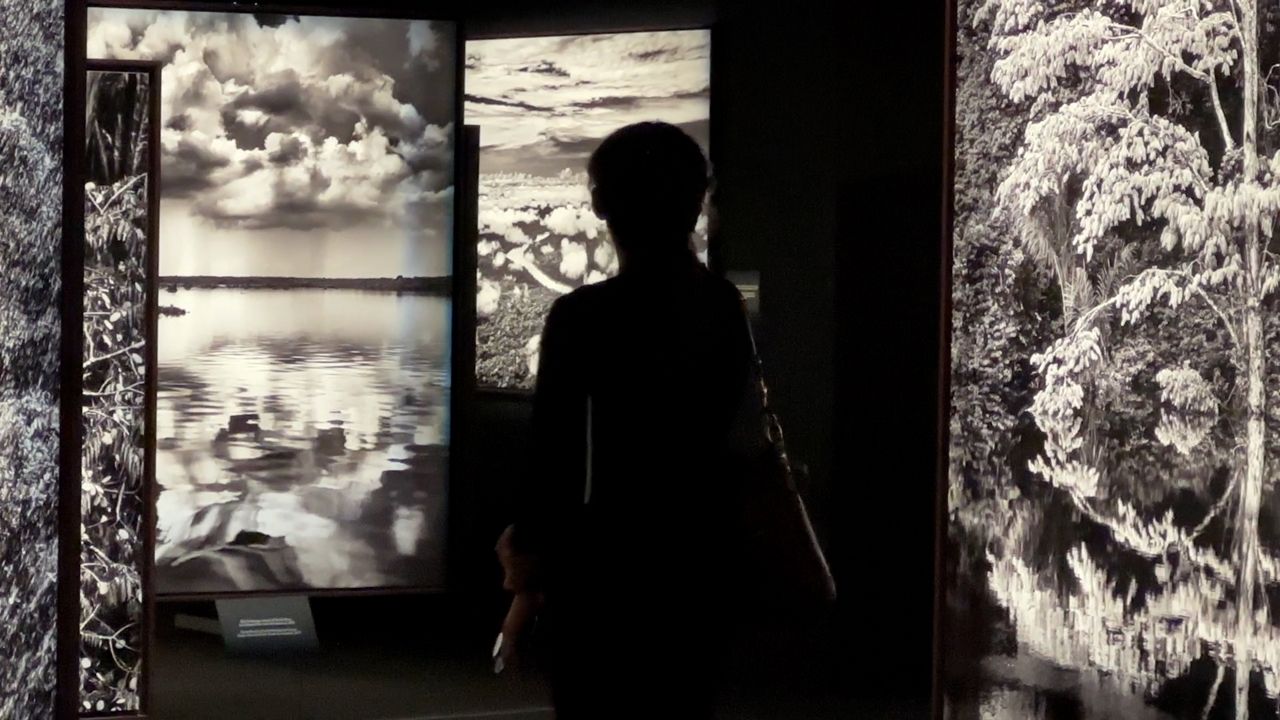LOS ANGELES — There’s a good chance the gas in your car right now originated in the rainforest.
According to Amazon Watch, half of all the oil drilled and exported from the Amazon ends up in California — and half of that comes straight to Los Angeles.
Take jet fuel, for instance. Amazon Watch says LAX consumes more oil from the Amazon than any other airport in the world — on average, one in every six gallons used at the busy international airport.
“Most people don't think that our oil is coming from the Amazon," said Amazon Watch executive director Leila Salazar-Lopez. "Most people think it's coming from the Central Valley or Saudi Arabia. We're actually here in California, importing more oil from the Amazon than Saudi Arabia.”
The Amazon is the focus of a stunning photography exhibit currently on display at the California Science Center in Exposition Park. Walking through Amazônia is kind of like wandering through a forest — one that Jeff Rudolph, California Science Center's president and CEO, finds himself returning to time and again.
“I probably spent 10 hours just looking at all the photos,” said Rudolph. “And I still could spend more time.”
Supported by the Annenberg Foundation, this is the exhibit’s first and so far only showing in North America. Visitors to the space are surrounded by floating black-and-white images of vast landscapes taken by photojournalist Sebastião Salgado, while also full immersed in a soundscape that seems to vibrate through the room.
And then there are the voices that come from members of some of the isolated Indigenous peoples who live in the Amazon and exist with little or no contact with Western civilization.
“They’ve lived there for years in harmony with the forest,” Rudolph said. “They talk some in videos about the threats to the forest and their way of life.”
And by extension, they are threats to our way of life as well.
Gesturing to a photo showing a concentrated torrential downpour, Salazar-Lopez put the connection in succinct terms.
“Without this rain, we don't have rain in here in California,” she stated.
Salazar-Lopez added that the Indigenous people of the region call the forest the heart of the world, and she agrees because, as she explains it, the Amazon drives the global weather system.
“The flying rivers of the Amazon are what bring rainfall and what bring snow to our mountains,” Salazar-Lopez said. “And without that, we're in drought. And when we're in drought, and then we suddenly get an atmospheric river, we see the flooding that we saw last month. “
She says deforestation — which increased in the past few years under Brazil’s previous administration — has thrown the atmospheric rivers off track. And stability in the Amazon, she says, is vital for stability across the globe.
“Those weather systems are what keep our climate in balance,” she said. “When they're off course, that's when we see climactic events, we see floods, we see fires, we see the climate crises that we're facing today.”
Salazar-Lopez added that "we cannot protect our climate and restore climate stability without protecting the Amazon rainforest."

Gathered at the exhibit with members of the group Artists for Amazônia, Salazar-Lopez said the region is a tipping point, but she assured it’s not too later for world leaders to commit to turning things around. She applauded the more than 100 world leaders at the COP26 conference in Glasgow who promised to end deforestation by 2030, but says she’s watching to see what they are doing to fulfill that commitment.
Salazar-Lopez is also closely watching the White House this week as President Joe Biden is set to meet with Brazilian President Luiz Inacio Lula da Silva. Among other things, the two are expected to discuss rainforest protections and climate commitments.
“We have a lot of hope that that meeting will set the precedent for permanent protection of the Amazon rainforest,” Salazar-Lopez said.
The meeting between the two leaders takes place Friday. The Amazônia exhibit closes 10 days later, on Feb. 20. Admissions to the exhibit and the Science Center are free.
CORRECTION: The story has been updated to clarify that half of all the oil drilled and exported from the Amazon ends up in California. (Feb. 10, 2023)



